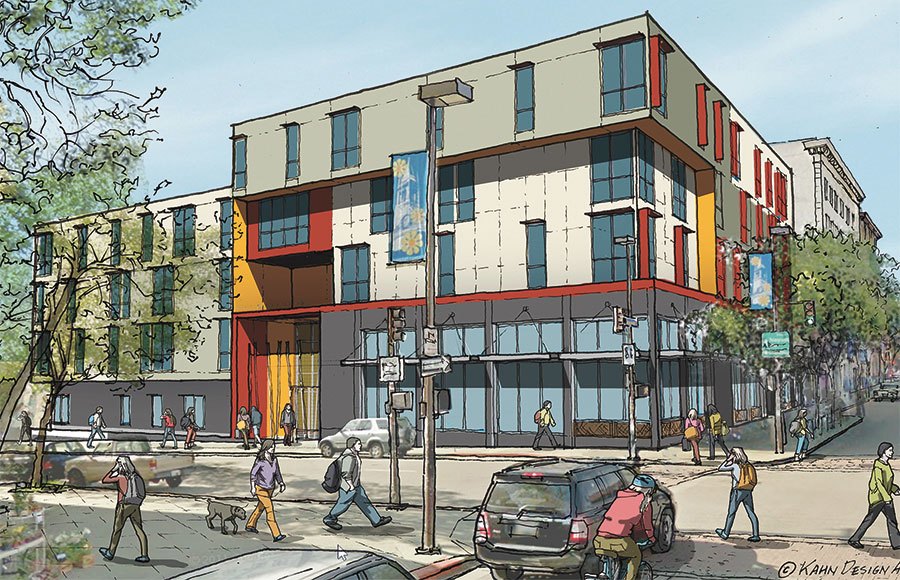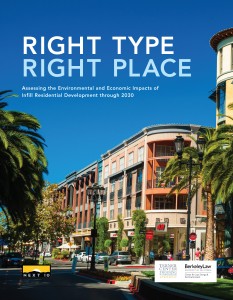
Earlier this month, Governor Newsom signed two significant housing bills — one to end single-unit zoning in urban areas across California and one to allow local governments to upzone parcels near transit to up to 10 units. These new laws could start to make a dent in the state’s multi-million unit housing shortage. But how much?
First and foremost, SB 9 (Atkins) would allow homeowners to convert their house into a duplex, or split their lot and build two units on each lot, allowing up to four units per original parcel — all with streamlined local approval. In short, it ends single-unit zoning in urbanized and transit-rich areas across the state.
For context, the state has roughly 7.5 million single-unit-zoned parcels, and nearly two-thirds of residential land in the state is reserved exclusively for this type of single-unit zoning.
I recently hosted David Garcia from UC Berkeley’s Terner Center on Housing Innovation on KALW’s Your Call to discuss the bill, and his center found that SB 9 could enable the creation of over 700,000 new homes that would otherwise not be market feasible. Given that some estimates peg the state’s housing shortage at 3.5 million, an additional 700,000 units would be a sizeable contribution.
Yet these changes won’t happen overnight. Property owners would need to decide to convert their homes or split their lots, a process which could take years to unfold statewide. Still, given the history of racial exclusion associated with single-unit zoning, coupled with the need to boost housing anywhere we can, and especially in high-income, transit-rich communities, this bill is a welcome step in the right direction.
The second bill, SB 10 (Wiener), is a voluntary opt-in for local governments wishing to rezone parcels for up to 10 units of housing near transit. It allows them to do so without undergoing environmental review.
This bill is less likely to have a big impact on housing production, simply because many local governments and their homeowner constituents are hostile to new apartment buildings. However, as the state tightens the requirements for local governments to provide housing for residents of all incomes, they may be forced to invoke this provision. And in the meantime, local governments that do want to see more dense development (and have the market conditions to enable it) will be able to utilize this law.
Notably, wealthy anti-development interests are already challenging this bill. The Los Angeles-based AIDS Healthcare Foundation, run by a longtime development opponent with personal beef against the author of SB 9, filed a lawsuit claiming that the new law is unconstitutional, because it allows local governments to override voter-approved initiatives restricting development with a supermajority vote. The nonprofit Planning and Conservation League also opposed the bill on similar grounds.
Given the statewide importance of housing production, this lawsuit is unlikely to succeed. But homeowners from some of the wealthiest communities around the state are also mobilizing to place before the voters a constitutional amendment restricting what state policy makers can do to boost housing over local objections.
The ballot measure is also unlikely to succeed given the pro-housing politics of the electorate (many of whom are renters and housing insecure). But it’s yet another example of wealthy interests fighting to preserve the exclusivity of their neighborhoods and maintain their inflated property values, at the expense of the less fortunate.
In the meantime, the real work to boost housing across the state will continue in the legislature. That means more legislation to allow apartment buildings near transit (particularly in high-income areas), streamlining approvals for infill projects, and reducing the overall cost of housing construction.
But for now, 2021 was definitely a year of progress on the housing front, with much more to be done.

What’s the latest with California’s major proposed legislation to remove local restrictions on new housing near transit and jobs? I wrote back in December about Senate Bill 50 (Wiener), which would relax local requirements on density, parking, floor-area ratio and height (in some cases), for projects near transit and in high income “job-rich” communities that lack commensurate housing (read: Cupertino, home of Apple).
SB 50 also contains provisions to protect low-income renters from eviction from any new development under the bill and takes off the table (at least for the near future) large swaths of urban low-income areas deemed to be “sensitive communities.” For a visualization of what that means on the ground, see p. 11 (figure 5) of the CASA compact for a map of San Francisco Bay Area zones that would be exempted under this provision.
So how is the bill doing? Notably, SB 50 sailed through its first committee hearing last week with overwhelming approval. But it may face critical obstacles in its next hearing at the State Senate Governance and Finance Committee. That’s because that committee is chaired by State Senator Mike McGuire from Sonoma County, who authored a rival bill (Senate Bill 4) which would do much the same to relax local zoning near transit as SB 50, except with the big difference that it would exempt any “city with a population of 50,000 or greater that is located in a county with a population of less than 1,000,000” (which would exempt McGuire’s hometown of Healdsburg from the bill’s provision).
So the politics remain dicey going forward. The difference this year though is that Wiener has lined up powerful political support from organized labor, who like the job opportunities that would flow from more housing projects in urban areas. And by exempting in the near term “sensitive communities” with low-income tenants, Wiener has largely neutralized (for now) opposition from tenant groups who helped sink last year’s version, SB 827.
As a result, the opposition has so far been revealed as wealthy communities up and down California, who are resistant to allowing any new development or letting newcomers move in who can’t afford an expensive single-family home. They frequently use lines of attack like the bill is a “developer giveaway” or that proponents are “real estate shills.”
To counter these voices and win more support from advocates for low-income renters, Wiener has introduced amendments that tighten up the affordable housing requirements for any project that uses the bill’s provisions. Specifically, SB 50 now has ‘inclusionary zoning’ requirements in which developers with projects with between 20-200 units must make 15% of the units affordable to low-income residents (implemented on a sliding scale, with fewer units required if they’re available to extremely low-income residents), while 200-350-unit projects must provide 17% affordable units. Any project above 350 units must have 25% affordable units (also on a sliding scale depending on the income eligibility). Housing projects under 10 units are meanwhile exempt from providing any on-site affordable units, while projects of 10-20 units in size can pay in-lieu fees. With these provisions in place, the bill would likely lead to a significant deployment of subsidized affordable units to accompany new market-rate development.
But what practical effect will SB 50 likely have on the ground, assuming it can survive the messy politics and become law relatively intact? UC Berkeley’s Terner Center for Housing Innovation and Urban Displacement Project conducted an interesting case study policy brief and found that any likely boost to new housing under SB 50 would mostly be small scale and in high-income communities, though that impact varies depending on whether other local restrictions are in place.
The UC Berkeley study involved a parcel and financial feasibility analysis on four representative neighborhoods in the state, with the following highlights:
- Developers will get a much higher return on SB 50 projects in upscale areas, even with the higher land costs, meaning that most projects will be built in these areas and not in low-income areas (as I argued back during the SB 827 debates last year).
- Most of the available parcels (at least in these four study areas) are too small to support big projects, meaning most development will likely be of the 12-unit or less variety; in addition, the bill’s restrictions on developing properties with tenants will likely take a significant number of parcels off the table (a good thing, from the point of view of protecting current tenants from eviction).
- High on-site affordable housing requirements (discussed above) will be financially feasible in upscale areas but could sink projects in lower-income neighborhoods that otherwise barely pencil, so Sen. Wiener may want to consider a less rigid approach to the affordable housing requirements and instead scale them based on the value of the project.
- Remaining local government restrictions, such as high setback requirements and bans on projects that cast too much shadow (which was a dealbreaker for an important housing project in San Francisco that the board of supervisors just killed because it would cast occasional shadows at an adjacent park), will still impede projects, even if SB 50 passes.
- Developers may choose to ignore the benefits of SB 50 if a local government has already made it easy to permit projects at the current, locally determined height and density limits, just to avoid a protracted permitting fight that would come with using new, state-allowed higher limits.
The findings from this study should be clarifying for the SB 50 debate going forward. First, they show the relatively limited impact that SB 50 might have on the ground, at least compared to some of the hyperbolic rhetoric and initial studies about the predecessor bill’s impact in specific areas.
Second, SB 50 will likely end up being a just step (albeit a big one) in the right direction on boosting housing supply to match demand. Further reforms (some under consideration in other bills being debated this session) will need to focus on streamlining the permitting process for projects consistent with this new zoning. Otherwise, local governments are likely to respond to SB 50’s passage by adding more steps to the permitting process in order to kill projects through delay and multiple veto points. State legislation may also need to address the other zoning restrictions on new development that SB 50 leaves untouched, such as the aforementioned setback and shadow limits.
California’s current housing shortage certainly didn’t happen by accident — it’s the result of a complicated web of politics that SB 50 and its backers are trying to undo, piece by piece. We’ll have to stay tuned as more studies assess the bill’s impact and Wiener entertains more political compromises to win over support.



